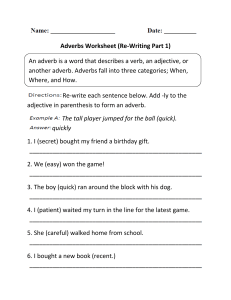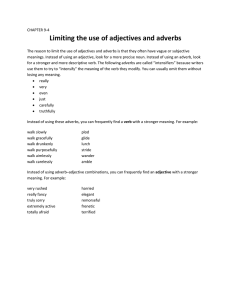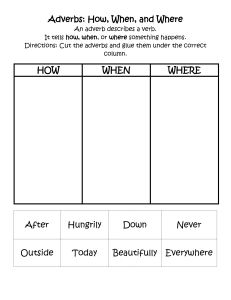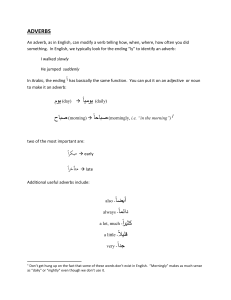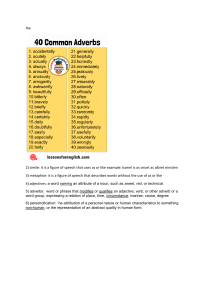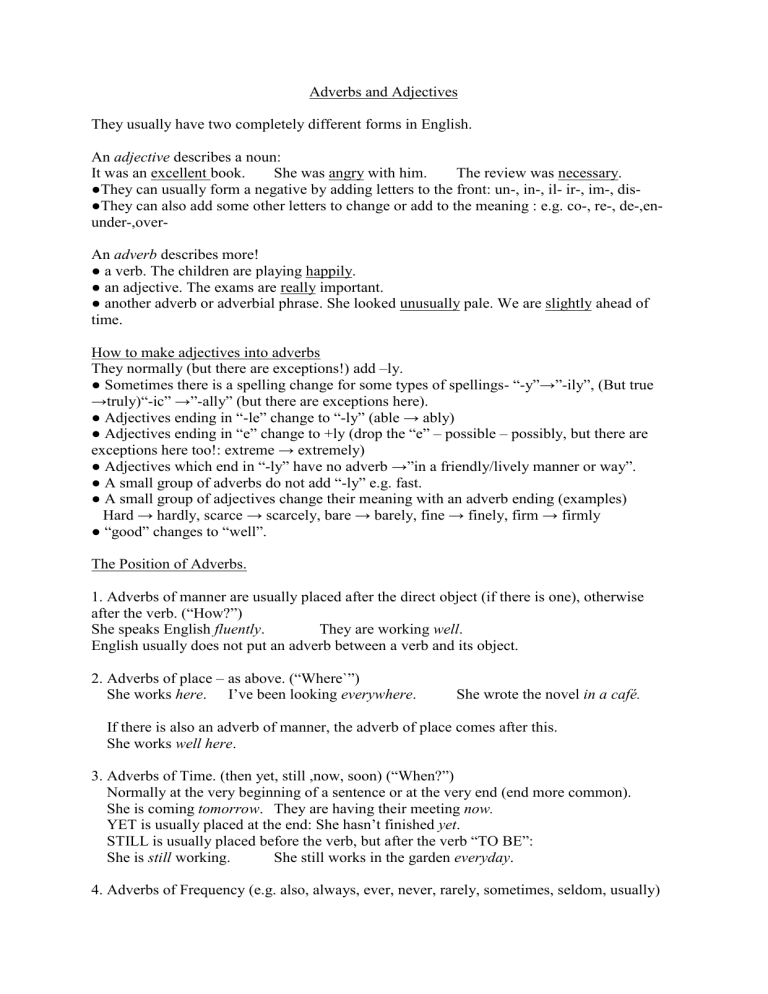
Adverbs and Adjectives They usually have two completely different forms in English. An adjective describes a noun: It was an excellent book. She was angry with him. The review was necessary. ●They can usually form a negative by adding letters to the front: un-, in-, il- ir-, im-, dis●They can also add some other letters to change or add to the meaning : e.g. co-, re-, de-,enunder-,overAn adverb describes more! ● a verb. The children are playing happily. ● an adjective. The exams are really important. ● another adverb or adverbial phrase. She looked unusually pale. We are slightly ahead of time. How to make adjectives into adverbs They normally (but there are exceptions!) add –ly. ● Sometimes there is a spelling change for some types of spellings- “-y”→”-ily”, (But true →truly)“-ic” →”-ally” (but there are exceptions here). ● Adjectives ending in “-le” change to “-ly” (able → ably) ● Adjectives ending in “e” change to +ly (drop the “e” – possible – possibly, but there are exceptions here too!: extreme → extremely) ● Adjectives which end in “-ly” have no adverb →”in a friendly/lively manner or way”. ● A small group of adverbs do not add “-ly” e.g. fast. ● A small group of adjectives change their meaning with an adverb ending (examples) Hard → hardly, scarce → scarcely, bare → barely, fine → finely, firm → firmly ● “good” changes to “well”. The Position of Adverbs. 1. Adverbs of manner are usually placed after the direct object (if there is one), otherwise after the verb. (“How?”) She speaks English fluently. They are working well. English usually does not put an adverb between a verb and its object. 2. Adverbs of place – as above. (“Where`”) She works here. I’ve been looking everywhere. She wrote the novel in a café. If there is also an adverb of manner, the adverb of place comes after this. She works well here. 3. Adverbs of Time. (then yet, still ,now, soon) (“When?”) Normally at the very beginning of a sentence or at the very end (end more common). She is coming tomorrow. They are having their meeting now. YET is usually placed at the end: She hasn’t finished yet. STILL is usually placed before the verb, but after the verb “TO BE”: She is still working. She still works in the garden everyday. 4. Adverbs of Frequency (e.g. also, always, ever, never, rarely, sometimes, seldom, usually) i. ii. iii. iv. After the simple tenses of “TO BE”: He is always late. BUT before the simple tenses of ALL OTHER VERBS. She always works late. I rarely play tennis. With tenses consisting of more than one verb, they are placed after the auxiliary: I have hardly begun. He can never understand me! EXCEPTION! Put before auxiliaries when these are used alone. Can you park in town? Yes, I usually can. No, I never drink. 5. Adverbs of Degree. – modifiy adjective/adverb, placed before this word. It was too hot to work. He played extremely badly. 6. General order is: Manner (How?) Place (Where?) Time (When?)
